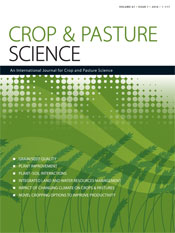CP15097Soil compaction and controlled traffic considerations in Australian cotton-farming systems
Controlled traffic farming (CTF) practices can reduce the wheel-tracked area by ≥50% compared with conventional, non-organised mechanisation systems. CTF enables for improved trafficability and timeliness of field operations. Avoidance of traffic compaction in CTF systems improves water and fertiliser-use efficiency, reduces greenhouse gas emissions and energy requirements of tillage operations. A shift towards increased adoption of CTF is likely to improve the sustainability and long-term viability of cotton production.




